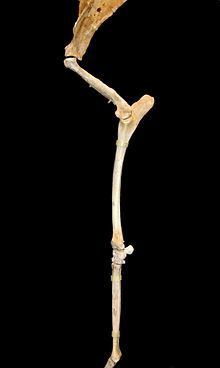Order Artiodactyla Phylum Chordata | Family Camelidae Rank Genus | |
 | ||
Similar Procamelus, Gigantocamelus, Hemiauchenia, Megacamelus, Titanotylopus | ||
Megatylopus (also known as the North American camel) is an extinct and large genus of terrestrial herbivore the family Camelidae, endemic to North America from the Miocene through Late Pliocene—Early Pleistocene boundary 13.6—1.8 mya, existing for approximately 11.8 million years.
Contents
Taxonomy
Megatylopus was named by Matthew and Cook (1909). Its type is Megatylopus gigas. It was synonymized subjectively with Paracamelus by Macdonald (1959). It was assigned to Camelidae by Matthew and Cook (1909), Webb (1965), Patton (1969), Harrison (1985), Carroll (1988) and Honey et al. (1998).
Morphology
It stood about 4.20 m (14 ft) tall, with its legs already measuring 2.10 m (7 ft). Fossil remains have been found in Oklahoma, United States.
Body mass
A single specimen was examined for estimated body mass by M. Mendoza, C. M. Janis, and P. Palmqvist. This specimen was estimated to weigh 1,698.4 kg (3,700 lb)
Fossil distribution
Fossil distribution ranged from North Carolina to California.
